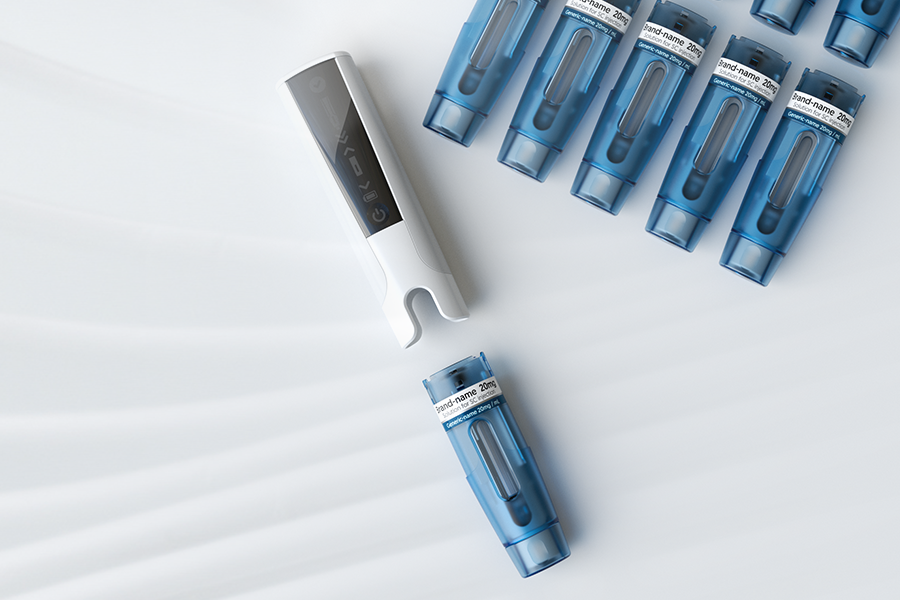Every year, billions of tons of CO2 are released into the atmosphere as the result of fossil fuel production, and human activity is leading to record-high greenhouse gas production. The result is an environment and ecosystem that is rapidly changing: shifting weather patterns, increased wildfires, and flooding, more severe weather events have all been observed on a global scale over the last four years. The impacts of a changing environment are not just ecological, but societal, and are impact resource security.i There is a vital need for business leaders, across every sector, to develop and implement holistic sustainability solutions.
It is widely recognized that the medical device industry is among the highest waste-producing industries, largely due to business and regulatory models that rely on single-use products. While many companies are concerned about the impact of sustainability initiatives on COGS (Cost of Goods Sold), research now indicates that a holistic approach to sustainability may not only allow companies to maintain production cost parity but may even reduce production and distribution expenses in the long run.ii
Sustainability Across the Medical Device Life Cycle
The end of a product lifecycle is what most people often associate with sustainability. Whether the device and packaging are recyclable, and whether any components are reusable, are frequently cited as means of improving overall sustainability. However, waste stream management is only one facet to overall medical device sustainability. Throughout the entire device life cycle, decisions are made that impact overall device sustainability, including design and material selection, where over 80% of sustainability decisions are made; energy use; opportunities to reduce carbon emissions; manufacturing and distribution; and supply chain.iii
Life Cycle Analysis (LCA) is a comprehensive and standardized way of assessing the sustainability of medical devices and evaluating the impact of individual inputs on the overall product sustainability.
By leveraging LCA, medical device companies can conduct an apples-to-apples comparison of new and emerging technologies and products, and pharmaceutical companies can conduct similar comparisons to select medical devices that best complement their sustainability initiatives.
Six Pathways to Sustainability
There is no singular solution to achieve sustainability and, given the variety of medical devices to solve different disease states, tailored approaches are required, even within standardized analyses like LCA. However, medical device manufacturers can take several factors, or pathways to sustainability, into account when constructing and LCA for existing and emerging medical devices.
- Device Design – Can the device be designed to have reusable parts, disposing only what is necessary? Are there means of reducing or eliminating electronic components? Can components especially electronics be reduced in size to minimize the eventual impact on the waste stream? Where batteries are included, are batteries rechargeable and/or has the battery with the longest shelf life been included in the design? Can product dimensions be minimized to reduce packaging and/or cold temperature storage requirements?
- Material Selection – Can renewable polymers be substituted for petroleum-based plastics or, if not, can recycled plastic be used in any of the device components? Can the number of materials be reduced, or easily separated, to facilitate recycling at the end of the device life cycle? Are materials selected that can be refurbished and reused?
- Packaging – Can compostable or recyclable packaging be used? Are there means of reducing the overall packaging requirements? Can Styrofoam be eliminated from the packaging format? Can packaging be made from a single material to ease recycling?
- Manufacturing Process – Are environmental best practices being followed for waste stream disposal and carbon capture? Are there manufacturing options that will reduce energy and/or water usage? Can alternative energies like wind and solar be leveraged to augment traditional energy sources for the manufacturing process?
- Distribution – Are there options to minimize long-distance transportation through the choice of manufacturing and warehousing locations?
- Disposal – Can reusable devices be used in lieu of single-use formats? Could the device be refurbished, or can elements be recycled?
Because of the many paths to achieving holistic sustainability, medical device developers must consider how each input along a sustainability path not only improves the ecological impact of the device at various points along the product life cycle, but also how these sustainability inputs will result in consequences or improvements on medical device safety, usability, and requirements directed toward optional device requirements like connectivity. While approaching sustainability from a holistic perspective is seemingly daunting, even small changes anywhere in the life cycle of the medical device will have big impacts on overall device sustainability; using LCA, it’s possible to identify those inputs that will lead to the largest impacts and use that as a starting point toward progressive medical device improvements.
__________
[i] “The Climate Crisis – A Race We Can Win”, United Nations 75, https://www.un.org/en/un75/climate-crisis-race-we-can-win, accessed August 29, 2021.
[ii] “Sustainability”, Johnson & Johnson Health System Consumer Programs, https://www.jnjmedicaldevices.com/en-US/service/healthsystems/sustainability, accessed August 29, 2021.
[iii] “Building Sustainability into Medical Devices”, Inside Battelle, https://inside.battelle.org/blog-details/building-sustainability-into-medical-devices, accessed August 29, 2021.

